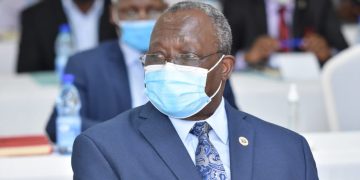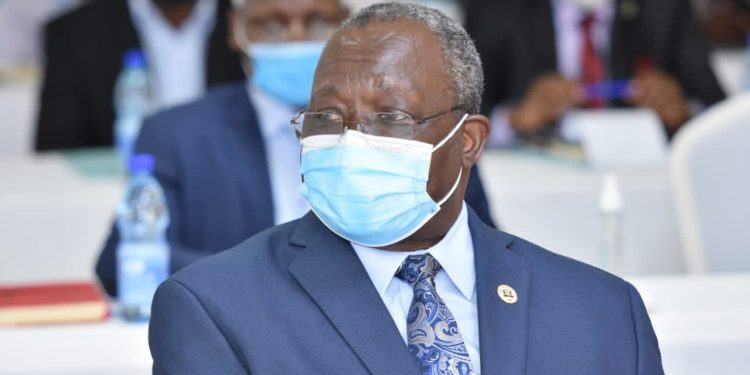More boys dropped out of school after the first school closure, according to the National Assessment Progress in Education (NAPE). Uganda went under the first lockdown resulting from the COVID-19 pandemic between March and September 2020.
The lockdown impacted learners and teachers in different ways. However, how much different groups were affected up to the time of school re-opening was not known.
While releasing the NAPE report in Kampala on Tuesday, Dan Kyagaba, the manager in charge of NAPE at Uganda National Examinations Board (UNEB), noted that with increased teenage pregnancy and child marriages, the focus of the most affected learners was turned to the female students yet the boys were equally affected.
The findings of the study show that 10 per cent of P.6 learners and 13 per cent of S.3 learners did not return to school. Gender-wise, the proportion of P.6 girls (8 per cent) who did not return to school was significantly lower compared to the boys at 10.2 per cent.
The study took place in over 500 primary schools and 200 secondary schools in 100 districts focusing on learners in semi candidate classes (P.6 and S.3) across the country with UNEB interviewing learners who had not returned to school when schools reopened.
“A study carried out to understand the effects of the COVID-19 pandemic on teaching and learning at the primary and Ssecondary education levels in Uganda during the first school closure has pointed to the fact that boys were also greatly affected. It seems there is something the entire society has been missing,” Kyagaba noted.
According to the report, the proportion of P.6 learners in rural areas at 11.3 per cent who did not return to school was also significantly higher than that of urban areas at 1.9 per cent. While private primary schools gained 1.5 per cent, more P.6 learners at reopening 11.8 percent of learners in public primary schools did not return to school.
At S.3 level, the report notes that there were no significant variations in the proportion of learners who did not report to school by gender, location or school ownership. According to the report, teenage pregnancy affected 18 per cent of P.6 and 30.5 per cent of girls who did not return to school.
However, for the boys, most of them preferred causal labour over learning while others lost interest in returning to school. James Jjuuko, the chairperson of Kampala Primary Headteachers Association, notes that the finding by NAPE is critical to the community as schools reopen. Jjuuko notes that so far, various efforts are in place to ensure that girls return to school.
“The society has had this stereotype that girls are the worst affected group of learners during this closure. However, findings by the report have rebuked this stereotype and this should inform policymakers to ensure that there is an effort to ensure that the boy child is not neglected in their school reopening plans,” said Jjuuko.
To prevent a similar or worse situation of learners dropping out of school when schools reopen in January, the NAPE report recommends that there is a need to provide psychosocial support and counselling to the learners to change their mindset on reopening.
However, Rev. Dr Paul Kakooza, the head of the Church of Uganda Directorate of Education, says that to achieve this the government needs to recruit more social workers and professional counsellors.
“This is a critical moment. The ministry of Education and Sports working with their gender counterpart should start deploying these professionals. To prepare the mind of learners, parents, and the community. This needs to be done right now since the proposed dates for school reopening are approaching,” said Rev Dr Kakooza.
About teachers, the overall results showed that more teachers in public schools reported back to teach P.6 and S.3 learners at re-opening, that is, 7.4 per cent more at P 6 and 7.8 per cent more at S 3. This has been attributed to the fact that some of the teachers of lower classes were also summoned back to school to handle the extra streams created for P.6 and S.3 learners because of social distancing.
However, eight per cent of P.6 teachers and 3.4 per cent of the S.3 teachers in private schools did not report to school.
“The difference was significant amongst P.6 teachers, by school ownership. While secondary schools in rural areas had 11.5 per cent more teachers of S.3 learners reporting back at re-opening, 3.4 per cent of the teachers in urban schools didn’t report back to school,” the report reads in part.
The report, just like many others before it, stated that the majority of the teachers had lost interest in teaching because of inadequate or no pay; and yet the income-generating activities they had established proved a better alternative in terms of earnings.URN








